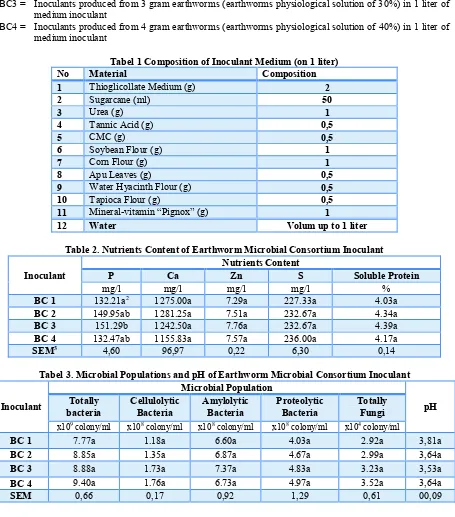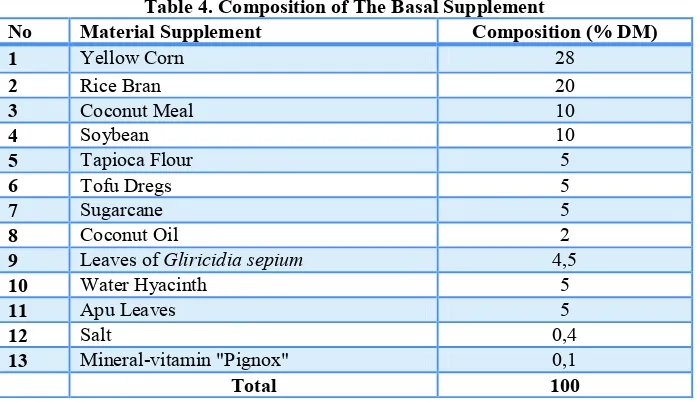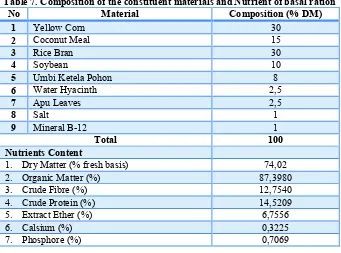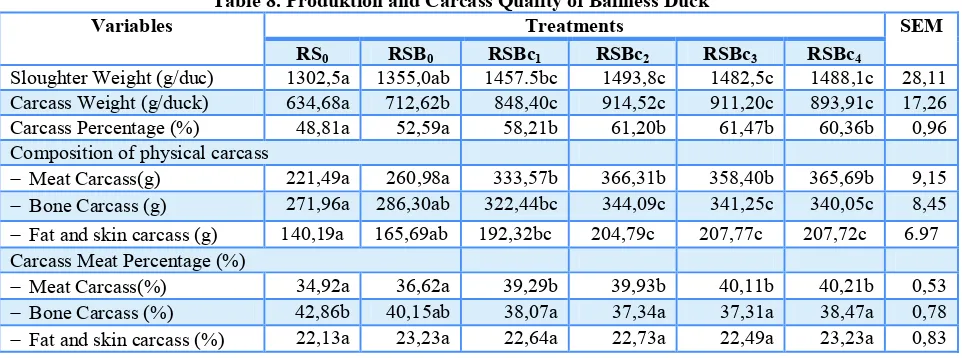Journal of Research in Agriculture and Animal Science
Head Office Address:
Prof. Chetan Sharma
SC-89, Sastri nagar, Ghaziabad, UP, India
Pin: 201002
ISSN(Online) : 2321-9459
Welcome
Journal of Research in Agriculture and Animal Science
The journal
provides a common forum where all aspects of Agricultural and Veterinary
Sciences are presented.
The journal invites original papers, review articles, technical reports and short
communications containing new insight into any aspect Agricultural and
Veterinary Sciences that are not published or not being considered for publication
elsewhere.
Aims & Scope
Journal of Research in Agriculture and Animal Science publishes scholarly
research, review and survey articles on any aspect of computer science. This
Journal topics include, but are not limited to:
Agriculture Science
Arid Soil Research And
Rehabilitation
Agricultural Genomics
Stored Products Research
Tree Fruit Production
Pesticide Science
Post Harvest Biology And
Technology
Seed Science Research
Irrigation
Agricultural Engineering
Water Resources Management
Agronomy
Animal Science
Physiology And Morphology
Aquaculture
Crop Science
Dairy Science
Entomology
Fish And Fisheries
Forestry
Freshwater Science
Horticulture
Poultry Science
Soil Science,
Systematic Biology
Agricultural Economics And
Agribusiness
Veterinary Science
Animal nutrition and Animal
physiology
Livestock production and
management
Veterinary Genetics
Breeding systems and
Anesthesiology
Treatment & prevention of
diseases among animals
Study of animal behavior
Anesthesiology & animal
behavior
Diary Science
Indexing
Cross Ref
Arxiv.org
ANED
Index Copernicus
Google Scholar
Jour Informatics
Editorial Board
Dr. Ebrahim Azarpour
Position: Professor,
Qualification: Phd
Agronomy sciences
University of Guilan, Rasht, Iran,
Country: Iran
Dr. Abdulbari A.Alfaris
Position: Professor,
Qualification: Phd
College veterinary medicine
Basra University-Iraq,
Country: Iraq
DR. TAPAS KAR
Position: Professor,
Qualification: Ph.D. (Dairying)
Department: Dairying
West Bengal University Of Animal &
Fishery Science,
Country: India
Dr. MNV Prasad, Gajula
Position: Scientist (Bioinformatics),
Qualification: Phd
Department: Bioinformatics
Indian Agricultural Statistics Research
Institute
Country: India
Dr. Chirag M. Modi
Position: Assistant Professor,
Qualification: Phd
Department: Agricultural
Sardarkrushinagr Dantiwada Agricultural
University
Country: India
DR. SUNANDA SHARMA
Position: Assistant Professor,
Qualification: Phd
Department: Agricultural
College Of Veterinary & Animal
Sicence, Rajasthan University Of
Veterinary & Animal Sciences,
Country: India
Head Office Address:
Prof. Chetan Sharma
SC-89, Sastri nagar, Ghaziabad, UP, India
Pin: 201002
ISSN(Online) : 2321-9459
Volume 3 ~ Issue 8 (January 2016)
Article Title
1
Effect Of Dietary Biosupplement Fermented Earthworm Microbes
Consortium Inoculant On The Carcass Production And Cholesterol Blood
Profile Of Baliness Duck
Authors: SUTAMA, I N. S., I M. MUDITA, I W. SUBERATA, AND N. W.
SITI.
Full PDF
2
Economic Analysis of Herbicides by Sole Maize Farmers in Bosso Local
Government Area of Niger State, Nigeria.
Authors: K. M. BABA, A.I. ILLO, S.U. HASSAN, I. K. TOMO AND P.
LILIAN
Full PDF
3
A Structural Analysis of Capital Determinants of growth in live stock
production Output in Nigeria.
Authors: EWUBARE, Dennis Brown
Journal of Research in Agriculture and Animal Science Volume 3 ~ Issue 8 (2015) pp:01-06
ISSN(Online) : 2321-9459
www.questjournals.org
*CorrespondingAuthor: SUTAMA, I N. S. 1 | Page
Faculty Of Animal Husbandry, Udayana University, Denpasar Hp. 08123710574 Research Paper
Effect Of Dietary Biosupplement Fermented Earthworm
Microbes Consortium Inoculant On The Carcass Production
And Cholesterol Blood Profile Of Baliness Duck
SUTAMA, I N. S., I M. MUDITA, I W. SUBERATA, AND N. W. SITI
Faculty Of Animal Husbandry, Udayana University, Denpasar Hp. 08123710574
R
eceived 14 December, 2015;
A
ccepted 12 January, 2016 © The author(s) 2015. Published with open
access at
www.questjournals.org
ABSTRACT
:-
A research has been carried out to evaluating potency of dietary biosupplement fermented earthworm microbes consortium inoculant on the carcass production and cholesterol blood profile of baliness duck. Completely Randomized Design consisted of six treatments and four replicates were employed. The first treatment was ration based on waste and weed crop without supplemented (RS0), while the other treatments were RS0 supplemented by biosupplement fermented without earthworm inoculant (RSB0), biosupplement fermented inoculant of 0,1% earthworm (RSBc1), biosupplement fermented inoculant of 0,2% earthworm (RSBc2), biosupplement fermented inoculant of 0,3% earthworm (RSBc3), and biosupplement fermentedinoculant of 0,4% earthworm (RSBc4). The result showed that fed dietary of biosupplement fermented eartworm
microbes consortium inoculant (RSBc1, RSBc2, RSBc3 and RSBc4) increasing (P<0,05) slaughter weight (1457,5 -1493,8 g/duck), carcass weight (848,40 – 914,52 g/duck), carcass percentage (58,21 – 61,47%), physical composition of carcass and carcass meat percentage compare with RS0. Fed ration supplemented biosuplemen SB0 (RSB0) also increase (P<0,05) slaughter weight and carcass weight baliness ducks compare with RS0 were 4,03% and 12,28% respectively. While for the chemical and cholesterol blood profile all treatments has not significant different (P>0,05), except for the concentration of LDL blood fed RSBc3 and RSBc4 decreased (P<0,05) concentration of LDL blood was 27.73 to 28.38 mg/dl Vs 29.70 to 41,33 mg/dl. It was concluded that dietary biosupplement fermented earthworm microbes consortium inoculant can increased carcass production and decreased concentration of LDL blood baliness duck.
Keywords:- Baliness Duck, Biosupplement, Earthworm Microbes Consortium Inoculant, Carcass Production, Cholesterol Blood
I.
INTRODUCTION
Optimization of baliness duck farms that have been developed with an integrated farming system by utilizing waste and weed crops as feed is important to be done in the national meat source diversification efforts. Utilization of waste and weed crops to feed the ducks on the one hand will reduce production costs. On the other hand the origin of the waste feed material has various drawbacks related to the poor quality of available nutrient content, especially due to high crude fiber content (Mudita et al., 2104; 2015; Partama et al., 2014). So it is absolutely necessary feed technology applications. Inoculant production of biosupplements through the utilization of microbial consortium earthworm is one potential strategy developed.
Utilization of earthworms as a source of a consortium of microbial inoculant in the production of bio-supplements believed to produce high quality products considering the content of various nutrients and growth promoters and various microbial symbionts on earthworms. Some research suggests that the use of
bio-supplement/supplements contain beneficial microbes “probiotic” can improve gastrointestinal health,
productivity and lowering cholesterol levels of poultry meat (Sheng-Qiu et al., 2013; Sutarpa et al., 2011; Zhou
Effect Of Dietary Biosupplement Fermented Earthworm Microbes Consortium Inoculant On The Carcass…
*CorrespondingAuthor: SUTAMA, I N. S. 2 | Page
II.
MATERIALS AND METHODS
Earthworm Microbes Consortium Inoculant
The earthworm microbes consortium inoculant were produced by inoculating earthworm earthworms that have been crushed (according to treatment) in anaerobic medium inoculant (Table 1) and then incubated T 39oC for 7 days. Production of inoculant done in under aseptic and anaerobic conditions (gas powered CO2). Nutrient contents and microbial population of inoculant presented at Table 2 and 3
Type of inoculant are produced, namely:
BC1 = Inoculants produced from 1 gram earthworms (earthworms physiological solution of 10%) in 1 liter of medium inoculant
BC2 = Inoculants produced from 2 gram earthworms (earthworms physiological solution of 20%) in 1 liter of medium inoculant
BC3 = Inoculants produced from 3 gram earthworms (earthworms physiological solution of 30%) in 1 liter of medium inoculant
BC4 = Inoculants produced from 4 gram earthworms (earthworms physiological solution of 40%) in 1 liter of medium inoculant
Tabel 1 Composition of Inoculant Medium (on 1 liter)
No Material Composition
1 Thioglicollate Medium (g) 2
2 Sugarcane (ml) 50
3 Urea (g) 1
4 Tannic Acid (g) 0,5
5 CMC (g) 0,5
6 Soybean Flour (g) 1
7 Corn Flour (g) 1
8 Apu Leaves (g) 0,5
9 Water Hyacinth Flour (g) 0,5
10 Tapioca Flour (g) 0,5
11 Mineral-vitamin “Pignox” (g) 1
12 Water Volum up to 1 liter
Table 2. Nutrients Content of Earthworm Microbial Consortium Inoculant
Inoculant
Nutrients Content
P Ca Zn S Soluble Protein
mg/l mg/l mg/l mg/l %
BC 1 132.21a2 1275.00a 7.29a 227.33a 4.03a
BC 2 149.95ab 1281.25a 7.51a 232.67a 4.34a
BC 3 151.29b 1242.50a 7.76a 232.67a 4.39a
BC 4 132.47ab 1155.83a 7.57a 236.00a 4.17a
SEM3 4,60 96,97 0,22 6,30 0,14
Tabel 3. Microbial Populations and pH of Earthworm Microbial Consortium Inoculant
Inoculant
Microbial Population
pH Totally
bacteria
Cellulolytic Bacteria
Amylolytic Bacteria
Proteolytic Bacteria
Totally Fungi
x109 colony/ml x108 colony/ml x108 colony/ml x108 colony/ml x104 colony/ml
BC 1 7.77a 1.18a 6.60a 4.03a 2.92a 3,81a
BC 2 8.85a 1.35a 6.87a 4.67a 2.99a 3,64a
BC 3 8.88a 1.73a 7.37a 4.83a 3.23a 3,53a
BC 4 9.40a 1.76a 6.73a 4.97a 3.52a 3,64a
*CorrespondingAuthor: SUTAMA, I N. S. 3 | Page Biosupplement
In this study produced 5 supplements consisting of 4 probiotic biosupplement namely SB1, SB2, SB3, and SB4 (supplement produced by a fermentation process using 4 inoculant microbial consortium) and basal supplement/SB0 (biosupplement fermented without earthworm microbe consortium inoculant as a supplement control). Supplements made in the form of pellets using a pelleting machine.
Fifth supplement products manufactured using basal supplements prepared by utilizing various crop wastes and other agro-industrial wastes before first sterilized with UV light for 24 hours in a laminar air flow. The composition of the basal supplement shown in Table 4.
Table 4. Composition of The Basal Supplement
No Material Supplement Composition (% DM)
1 Yellow Corn 28
2 Rice Bran 20
3 Coconut Meal 10
4 Soybean 10
5 Tapioca Flour 5
6 Tofu Dregs 5
7 Sugarcane 5
8 Coconut Oil 2
9 Leaves of Gliricidia sepium 4,5
10 Water Hyacinth 5
11 Apu Leaves 5
12 Salt 0,4
13 Mineral-vitamin "Pignox" 0,1
Total 100
Production of biosupplemen was done by the fermentation method. The fermentation process is done by every 1 kg (DM) products supplement fermented using a inoculant solution containing 50 ml of inoculant (according to treatment), 50 ml of sugarcane and 900 ml of water. Then mixed until homogeneous and immediately put in a plastic container lid tightly and filled to the brim. Then incubated anaerobically for 1 week. Furthermore biosupplement oven-dried at a temperature of 39 - 42 ° C until the moisture content of 20-25% of products (usually for ± 3 days). Once completed, the biosupplement ready to be used for further research activities. The nutrients content and population microbial presented at Table 5 and 6.
Table 5. Nutrients Content of Biosupplement
Variable Biosupplement SEM3
SB0 SBc1 SBc2 SBc3 SBc4
Dry Matter/DM (% fresh basis) 77,90a2 84,93b 85,53b 87,27c 88,75d 0,29 Organic Matter/OM (%) 88.22a 90,08b 90,12b 90,91c 90,94c 0,13
Crude Fibre/CF (%) 12,30c 9,51b 8,47ab 7,46a 7,14a 0,42
Crude Protein/CP (%) 15,75a 18,44b 19,56b 19,64b 19,91b 0,33
Extract Ether (%) 7,40a 7,77a 7.51a 7.77a 7.26a 0,14
Calsium/Ca (%) 0.88a 0.84a 0.84a 0.84a 0.85a 0,02
Phosphor/P (%) 0,75a 0,75a 0,77a 0,77a 0,82a 0,04
Table 6. Microbial Population of Biosupplement
Variable Biosupplement SEM3
SB0 SBc1 SBc2 SBc3 SBc4
Effect Of Dietary Biosupplement Fermented Earthworm Microbes Consortium Inoculant On The Carcass…
*CorrespondingAuthor: SUTAMA, I N. S. 4 | Page Ration Based on Waste and Weed Crop
The basal diet used in this study is based rations waste and weed crops. The basal diet prepared following the usual feed provided by a traditional farmer with the composition of the constituent materials are presented in Table 7.
Table 7. Composition of the constituent materials and Nutrient of basal ration
No Material Composition (% DM)
1 Yellow Corn 30
2 Coconut Meal 15
3 Rice Bran 30
4 Soybean 10
5 Umbi Ketela Pohon 8
6 Water Hyacinth 2,5
7 Apu Leaves 2,5
8 Salt 1
9 Mineral B-12 1
Total 100
Nutrients Content
1. Dry Matter (% fresh basis) 74,02
2. Organic Matter (%) 87,3980
3. Crude Fibre (%) 12,7540
4. Crude Protein (%) 14,5209
5. Extract Ether (%) 6,7556
6. Calsium (%) 0,3225
7. Phosphore (%) 0,7069
Supplementation ration done by mixing homogeneously 95% (DM) basal diet with 5% (DM) supplements (as per treatment). Further research ration is ready to be used as animal feed. Rationing is done ad libitum and feed consumption level is calculated every day from the early morning (08:00 pm) until the following morning (08.00 pm). Rationing is done by placing the ration in a container of plastic that is placed in front of the cage ducks on any treatment unit.
III.
EXPERIMENTAL DESIGN
The research was conducted by completely randomized design/CRD with six treatment and 4 replicated, where each replication consisted of five male ducks bali age of 2 weeks.
The treatments were as follows:
R0 = Fed ration based on waste and weed crop without Supplementation
RSB0 = Fed ration based on waste and weed crop supplemented 5% SB0
RSBC1 = Fed ration based on waste and weed crop supplemented 5% SBC1
RSBC2 = Fed ration based on waste and weed crop supplemented 5% SBC2
RSBC3 = Fed ration based on waste and weed crop supplemented 5% SBC3
RSBC4 = Fed ration based on waste and weed crop supplemented 5% SBC4
Variables Observations
The parameters observed in this study consists of:
1. Production carcass, consisting of slaughter weight, production and carcass percentage, carcass Physical Composition (production and the percentage of meat, bones and subcutaneous fat including the skin) 2. Chemical and cholesterol blood profile consists of blood glucose, blood uric acid, total cholesterol,
triglycerides, HDL and LDL blood Data Analysis.
*CorrespondingAuthor: SUTAMA, I N. S. 5 | Page
IV.
RESULTS AND DISCUSSION
Production and Carcass Quality
The results showed that applications of supplementation technology using probiotic biosupplement produced by earthworms microbes consortium inoculants (RSBc1, RSBc2, RSBc3 and RSBc4) increasing (P<0,05) slaughter weight, carcass weight, carcass percentage, physical composition of carcass and carcass meat percentage (Table 4). That table shows fed ration by supplementing biosuplemen (RSBc1, RSBc2, RSBc3 and RSBc4) capable of producing slaughter weight (1457.5 - 1493.8 g/duck), carcass weight (848.40 -914.52 g/duck), carcass percentage (58.21 - 61.47%), and the percentage of carcass meat (39.29 to 40.21%) were significantly higher (P<0.05) than fed ration R0 and/or RSB0.
Table 8. Produktion and Carcass Quality of Baliness Duck
Variables Treatments SEM
RS0 RSB0 RSBc1 RSBc2 RSBc3 RSBc4
Sloughter Weight (g/duc) 1302,5a 1355,0ab 1457.5bc 1493,8c 1482,5c 1488,1c 28,11
Carcass Weight (g/duck) 634,68a 712,62b 848,40c 914,52c 911,20c 893,91c 17,26
Carcass Percentage (%) 48,81a 52,59a 58,21b 61,20b 61,47b 60,36b 0,96
Composition of physical carcass
- Meat Carcass(g) 221,49a 260,98a 333,57b 366,31b 358,40b 365,69b 9,15
- Bone Carcass (g) 271,96a 286,30ab 322,44bc 344,09c 341,25c 340,05c 8,45
- Fat and skin carcass (g) 140,19a 165,69ab 192,32bc 204,79c 207,77c 207,72c 6.97
Carcass Meat Percentage (%)
- Meat Carcass(%) 34,92a 36,62a 39,29b 39,93b 40,11b 40,21b 0,53
- Bone Carcass (%) 42,86b 40,15ab 38,07a 37,34a 37,31a 38,47a 0,78
- Fat and skin carcass (%) 22,13a 23,23a 22,64a 22,73a 22,49a 23,23a 0,83
Notes:
1) Experimental Treatments:
R0 = Fed ration based on waste and weed crop without Supplementation
RSB0 = Fed ration based on waste and weed crop supplemented 5% SB0
RSBC1 = Fed ration based on waste and weed crop supplemented 5% SBC1
RSBC2 = Fed ration based on waste and weed crop supplemented 5% SBC2
RSBC3 = Fed ration based on waste and weed crop supplemented 5% SBC3
RSBC4 = Fed ration based on waste and weed crop supplemented 5% SBC4
2) The same letter in the same column, not significant different (P> 0.05)
3) SEM = Standard Error of The Treatment Means
The high level of the production and physical quality of carcass produced as a result of administration fed ration supplemented of probiotics biosupplement are response from improving the quality of rations due applications of supplementation and fermentation technology by inoculant of earthworms. microbial consortium. These results indicate the importance of processing technology applications, especially in the provision of low quality feed such as rations based on waste and weed crops.
Results of this research has also shown that earthworms are a source of high quality nutrients (Table 2) and synergistic microbial consortium (Table 3) and capable of effective role in optimizing the utilization of fiber-rich feed materials into high-quality biosuplement (Table 5 and 6). Fed of high-quality biosupplement with manufactured utilizing high-quality inoculants will definitely be able to produce a healthy body and the digestive tract of animal/duck are getting better, feed intake, feed digestibility and nutrient metabolism in the body so that the higher production quality and carcass be high (Table 8). The results also supported by Sheng-Qiu et al., (2013), Zhou et al., (2010) and Li et al (2011) that indicates the utilization of probiotic biosuplemen can increase productivity and production as well as the quality of the resulting carcass.
Cholesterol and Blood Chemistry Profile of Baliness Ducks
Effect Of Dietary Biosupplement Fermented Earthworm Microbes Consortium Inoculant On The Carcass…
*CorrespondingAuthor: SUTAMA, I N. S. 6 | Page Table 9. Cholesterol and Blood Chemistry Profile of Baliness Ducks
Variables Treatments SEM
RS0 RSB0 RSB1 RSB2 RSB3 RSB4
Blood Glucose (mg/dl) 153,75a 162,75a 168.75a 180,25a 175,5a 169,5a 6,39
Blood Uric Acid (mg/dl) 6.1a 4.68a 4.08a 4,05a 3,25a 3,15a 114
Totally cholesterol. (mg/dl) 237.25a 217.75a 198,00a 196,00a 193,00a 181,25a 15,02
Trigliyceride Blood (mg/dl) 53.5a 56.5a 51,50a 50,25a 50,50a 41,75a 6,33
Blood HDL (mg/dl) 138.55a 138.23a 141,6a 142,05a 143,63a 134,03a 15,02
Blood LDL (mg/dl) 41.33b 40,42b 37,89ab 29,7ab 28,38a 27,73a 2,46
Notes:
1) Experimental Treatments:
R0 = Fed ration based on waste and weed crop without Supplementation
RSB0 = Fed ration based on waste and weed crop supplemented 5% SB0
RSBC1 = Fed ration based on waste and weed crop supplemented 5% SBC1
RSBC2 = Fed ration based on waste and weed crop supplemented 5% SBC2
RSBC3 = Fed ration based on waste and weed crop supplemented 5% SBC3
RSBC4 = Fed ration based on waste and weed crop supplemented 5% SBC4
2) The same letter in the same column, not significant different (P> 0.05)
3) SEM = Standard Error of The Treatment Means
Blood chemistry profile produces relatively the same (except LDL) shows the level of health and metabolism in the body of animals is relatively good, reflecting the distribution of nutrients in the body rernak can take place properly. While the presence of high levels of LDL in the treatment R0 and RSB0 show on treatment without supplementation technology applications and/or using a fermentation process bioinokulan indicate persistently high bad cholesterol components ducks given such treatment. The results also clearly shows that supplementation with the application of technology products fermented microbial inoculants consortium earthworm is capable of significantly lowering blood cholesterol levels, especially LDL ducks treatment. This indicates the quality of the meat produced will be better and healthier.
V.
CONCLUSION
Supplementation of biosupplement fermented earthworm microbes consortium inoculant on ration based on waste and weed crop can increased carcass production and decreased concentration of LDL blood of baliness duck.
ACNOWLEDGEMENTS
This article is part of the Research Invention Udayana University, Denpasar Bali. The authors acknowledge to the Rector and Institute for Research and Community Service Udayana University through Invention Research 2014 for fund support in this study. Thanks are also due to the Laboratory of feed and nutrition animal, Faculty of Animal Husbandry Udayana University for assistance in experimental analysis.
REFERENCES
[1]. Li, W. F., I. R. Raiput, X. Xu, Y. L. Li, J. Lei, Q. Huang and M. Q. Wang. 2011. Effects of Probiotic (Bacillus subtilis) on Laying Performance, Blood Biochemical Properties and Intestinal Microflora of Shaoxing Duck. International Journal of Poultry Science 10 (8): 583-589
[2]. Mudita, I M., I W. Wirawan, A. A. P. P. Wibawa, I. B. G. Partama. 2014. Degradation of Lignocellulosic Substrates by Bacteria Isolated from Waste Landfill. International Journal of agriculture Innovation and Research. Volume 3 Issue 2; 555-558
[3]. Mudita, I M. I G. Mahardika, I N. Sujaya, and I. B. G. Partama. 2015. Potency of Bacteria Isolated from Bali Colon Waste as Lignocellulose Substrates Degrader. Injternational Journal of agriculture and Environmental Research. Volume 01 Issue 01; 12-23
[4]. Partama, I. B. G., I M. Mudita, N. W. Siti, I W. Suberata, and A.A.A. S. Trisnadewi. 2014. Potency Lignocellulose Degrading Bacteria Isolated from Bali Cattle Rumen Content Waste and Termites as Nonconventional Waste Degrader. An International Journal of Life Sciences and Chemistry. Vol. 31, No. 2: 1143-1149
[5]. Sheng-Qiu T, Xiao-Ying D.,Chun-Mei J., Jing-Jing P., Shan-Shan L., and Jin-Ding C. 2013. Effect of Bacillus subtilis natto on Growth Performance in Muscovy Ducks. Brazilian Journal of Poultry Science 15 (3); 169-286
[6]. Sutama, I N. S., S. A. Lindawati, Y. Ramona, I N. S. Wimada, I N. T. Ariana, and M. Hartawan. 2011. The effect of lactic acid bacteria administration on the performance, total bacteria in the digestive tract, and the blood and meat cholesterol content of kampong chickens.




